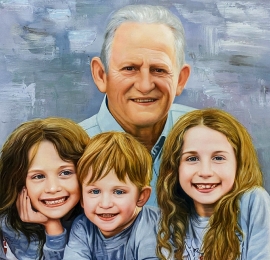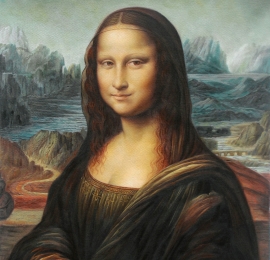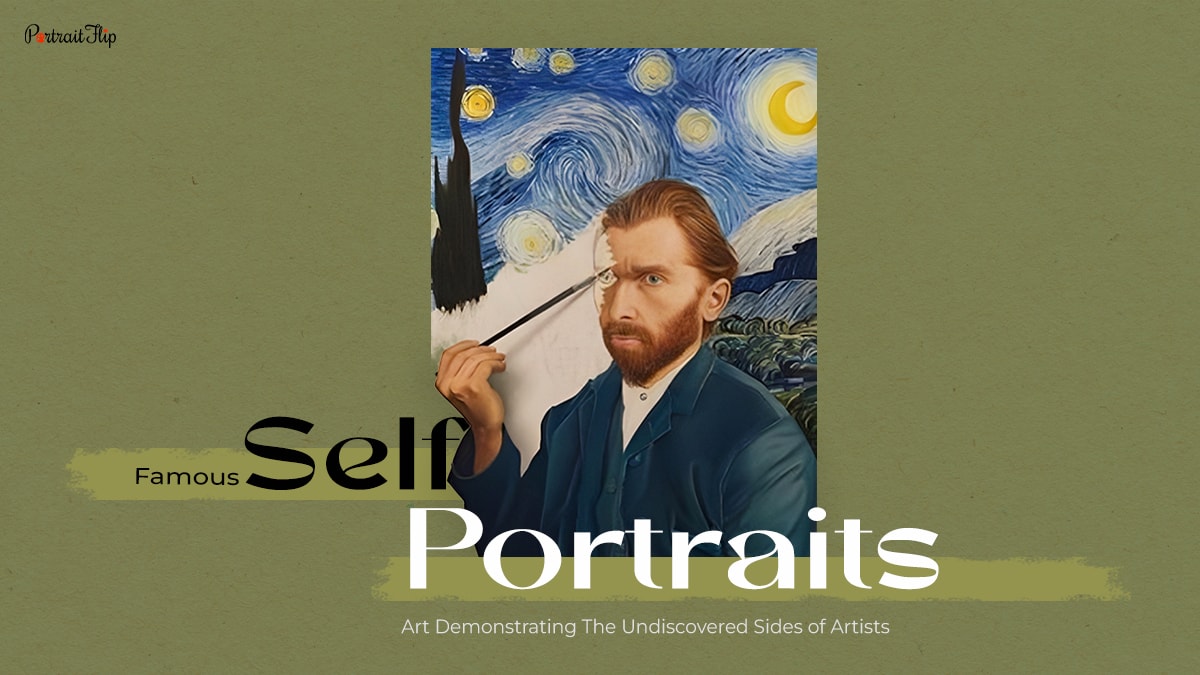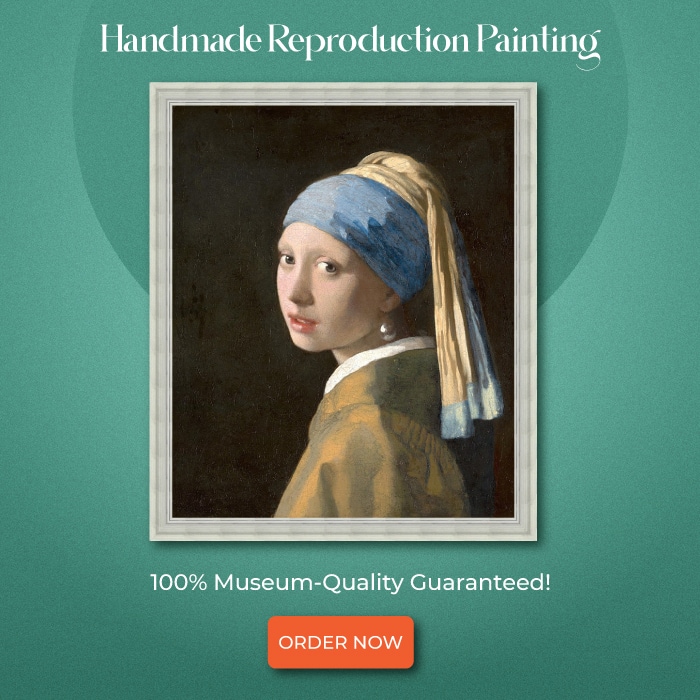Self-portraits have existed since antiquity but gained relevance in the early 15th century.
Thanks to all those geniuses who believed in this art and who, with every possible means, expressed their hearts out.
From Vincent Van Gogh to Frida Kahlo to Pablo Picasso to Jan Van Eyck, nearly all the artists who made it big in their lives have gotten their hands on self-portraits.
Some did it to capture their transition in life. Some did it to frame their pain. Whereas some did to immortalize their special moments.
Self-portraits are the traditional version of selfies and probably the only medium that has helped some artists address their physical, psychological, and personal well-being.
Today, we’re going to talk about those famous self-portraits who produced world-class self portraits that not only healed them from their excruciatingly painful journey but also improved their artistic arc.
Table of contents
- Portrait of a Man in a Red Turban (1433) by Jan van Eyck
- Self-Portrait (1500) by Albrecht Durer
- Portrait of a Man in Red Chalk (1512) by Da Vinci
- Self-Portrait (1660) by Rembrandt van Rijn
- The Desperate Man (1845) by Gustave Courbet
- Self-Portrait with a Beret (1886) by Claude Monet
- Self-Portrait with Halo and Snake (1889) by Paul Gauguin
- Self-Portrait with Bandaged Ear (1889) by Vincent van Gogh
- Self-Portrait (1878-80) by Paul Cézanne
- Self-Portrait (1900) by Pablo Picasso
- Self-Portrait with Cropped Hair (1940) by Frida Kahlo
- Soft Self-Portrait with Grilled Bacon (1941) by Salvador Dali
- Final Note
- Frequently Asked Questions
Portrait of a Man in a Red Turban (1433) by Jan van Eyck
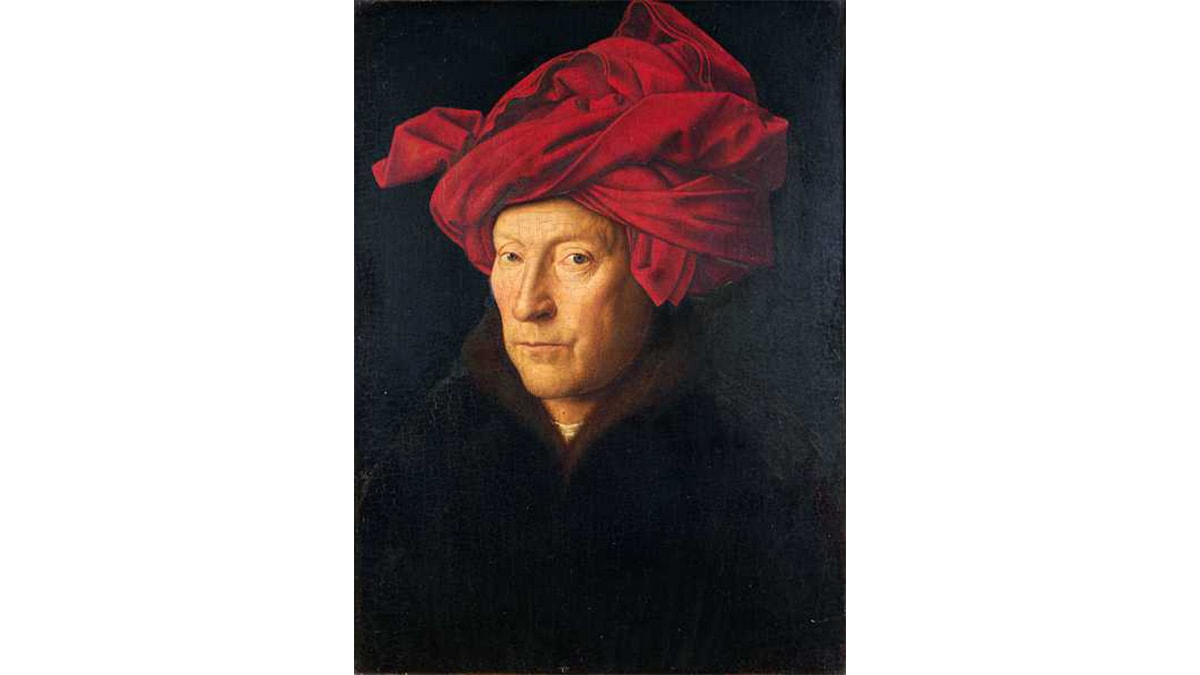
The first name that comes up while discussing famous self-portraits is Jan Van Eyck’s Portrait of a Man in a Red Turban.
Some believed that the man wasn’t Jan Van Eyck himself but someone else, and the turban wasn’t a turban but a chaperone.
Looking at its technicalities, you could sense that the self-portrait artist heavily relied on colors, shades, and lights to bring the best to the table.
The rich red turban in this self-portraiture instantly grabs the viewer’s attention, but in my opinion, he did an excellent job on facial expressions. The details are exceptional; only an experienced and well-knowledgeable painter could make it.
This most famous self-portrait is an asset of the National Gallery in London, which has been taking care of it for the last one and a half centuries.
(Also Read: 11 Famous Rococo Paintings)
Self-Portrait (1500) by Albrecht Durer
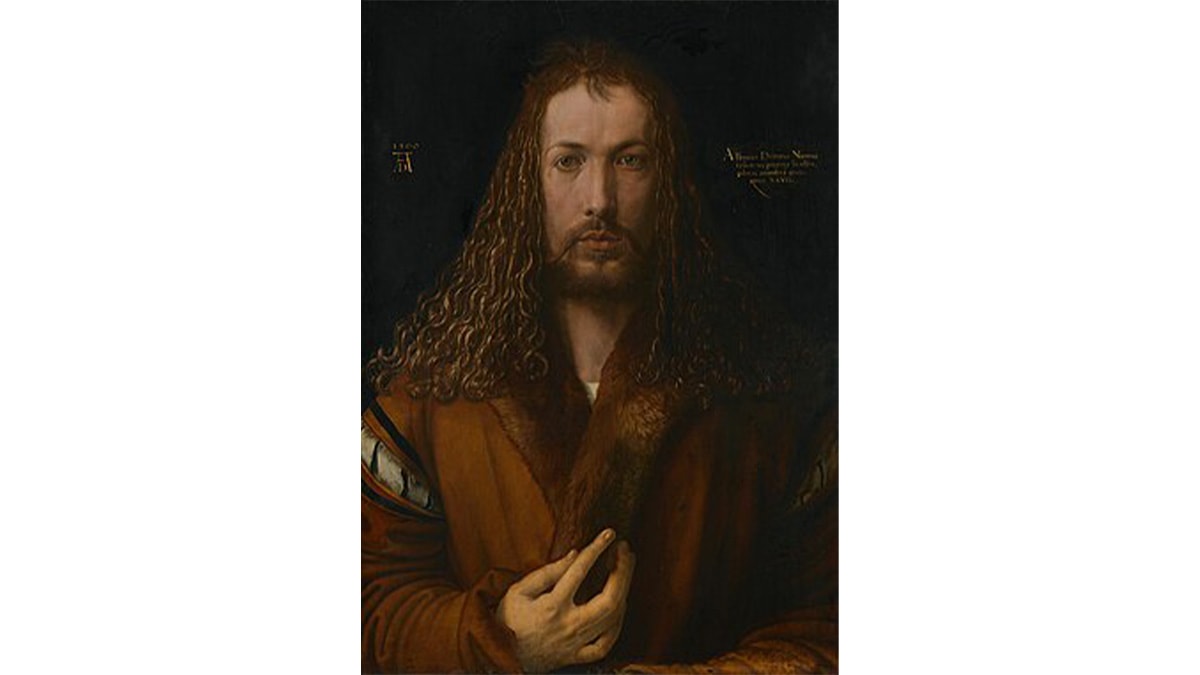
Some art captivates us but remains suspicious because of its depictions.
If you look at Albrecht Durer’s Self-Portrait (1500), you’ll get a sense that something was really up with the painter while composing it.
The famous self-portrait depicts the painter himself viewing us straight, with his curly hair left open, covering the sides of his shoulders.
Donning a golden brown coat, the subject’s right hand goes upward, tilting right, holding the collar of his coat.
The description is evident, yet some speculation makes this self-portrait appear sketchy and mysterious.
Out of all, the one that most have approved of is that this self-portrait shows Jesus Christ in Northern Medieval style.
This top self-portrait by Albrecht Durer is located in Alte Pinakothek, Munich.
Portrait of a Man in Red Chalk (1512) by Da Vinci
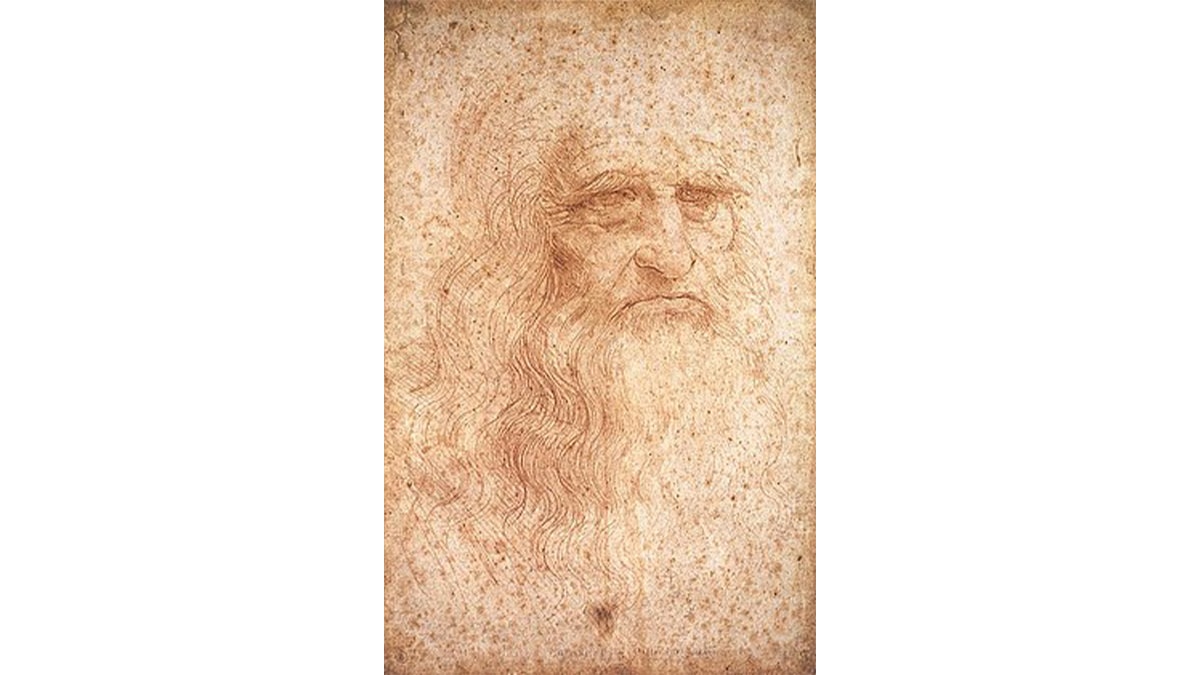
This is yet another mysterious self-portrait, which is widely known for its composition.
Da Vinci was 50 years old and in France while working on it; it is the only self-portrait ever made by Leonardo.
However, the topic for debate has been around its subject; the speculations were that Da Vinci was sixty years old, as he looked older in the image than he was.
Art critics and researchers would take the reference to the subject, which showed him with a solemn look, wrinkles on his forehead, and a long, untidy beard.
The depiction backed the claim, which then raised many questions.
But the fact that you perhaps won’t be aware of is that the way he was shown was a traditional way of demonstrating the almighty and prophets.
This first and last self-portrait of Leonardo is permanently located in Turin’s Royal Library.
Self-Portrait (1660) by Rembrandt van Rijn
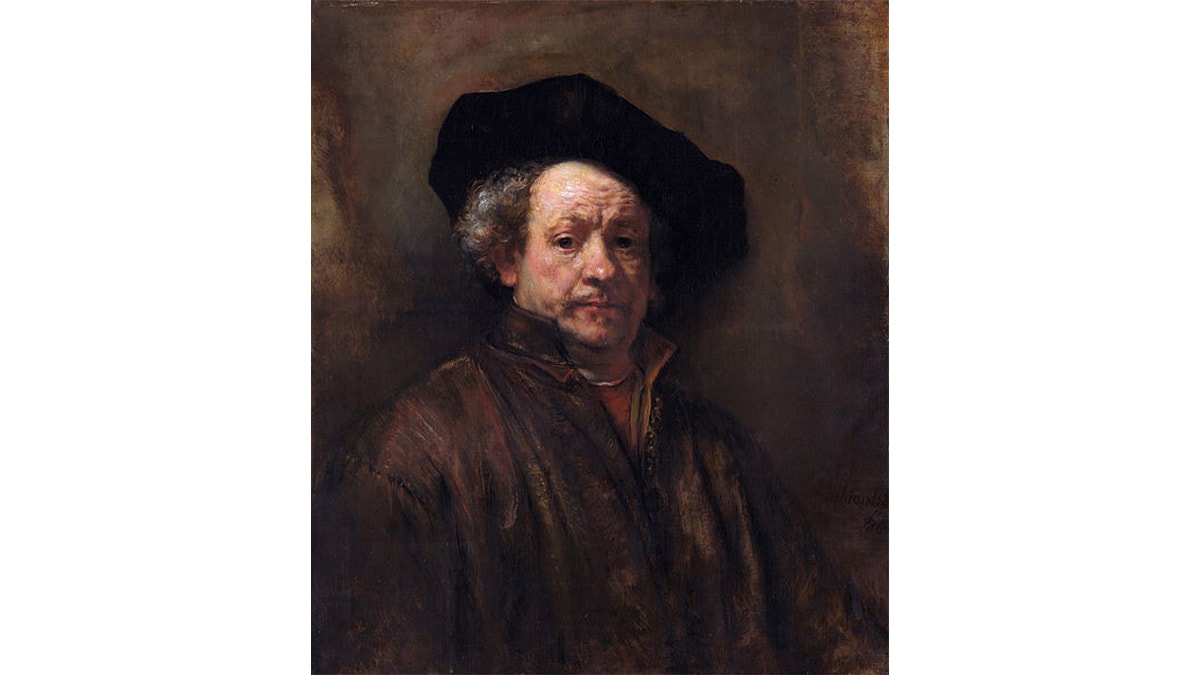
Rembrandt, a prolific painter of all time, drew a couple of self-portraits, but the one made in 1660 can give you an update on his life back then.
He was fifty-four years old when he completed this famous self-portrait. That was the era when he was experiencing many downfalls.
Wrinkles on his forehead, a large chunk of untidy gray hair enveloping his ear, and the face being fat depict nothing but the sign of his aging.
He was broke; he was physically and psychologically weakened.
The pain being expressed in this self-portrait will overwhelm you, as it was the beginning of his downfall, which continued for many years until he died in 1669.
The Desperate Man (1845) by Gustave Courbet
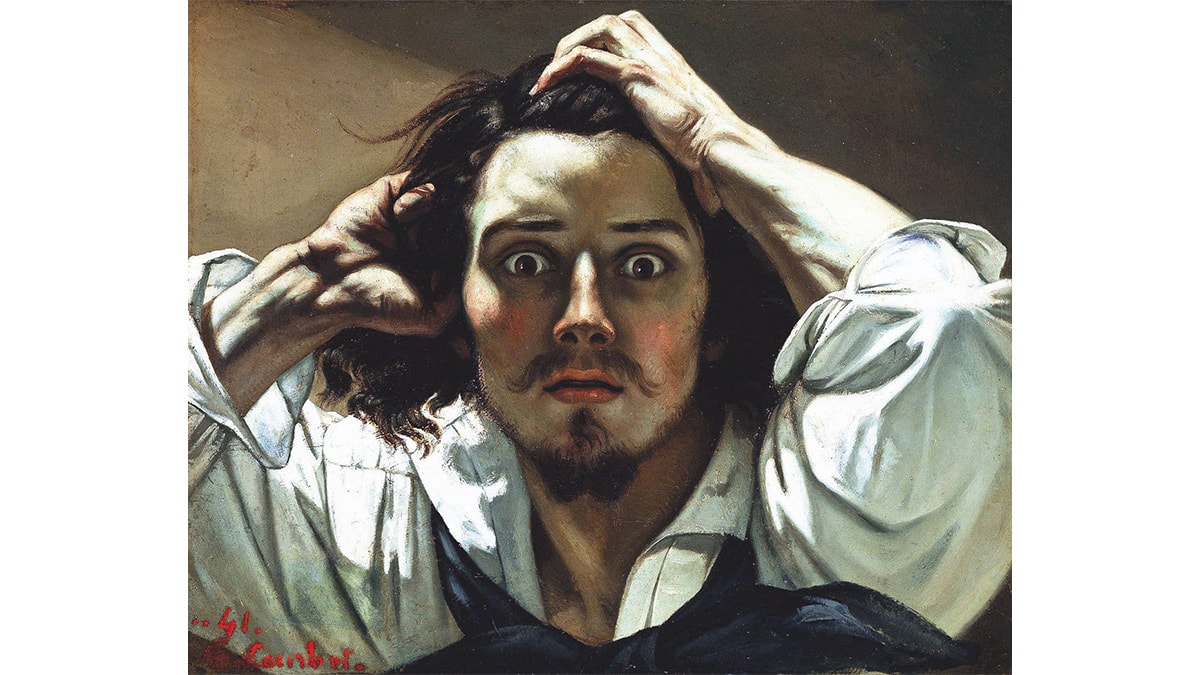
Self-portraits show the other side of artists that the world isn’t familiar with.
If you look at Gustave’s self-portrait, you’ll see an anxious and frustrated version of himself.
That is what happens when you don’t get what you’re capable of.
The art shows him in a very anxious and shocking state.
His hands are positioned in such a way that he is pulling the strands of his hair in frustration; some of his hair envelops both ears.
Looking straight at viewers, eyes wide open, the self-portrait reflected the pain he was carrying with himself because he had been rejected several times by Salon.
His expressive nature changed his artistic graph, and he was probably the first French painter who witnessed success in this genre and who produced many students who later made big in their lives.
The iconic self-portrait by Courbet is now part of the private collection
Self-Portrait with a Beret (1886) by Claude Monet
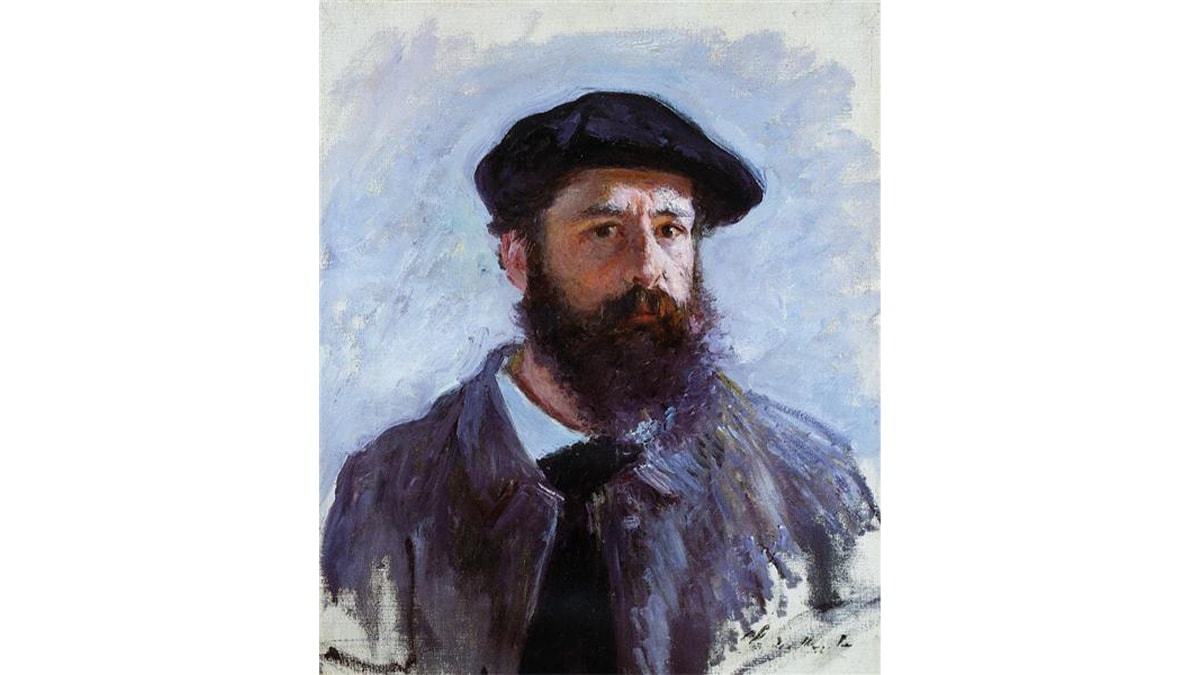
The famous self-portrait was also part of French Impressionism because of its color, background, and tone.
You wouldn’t find any major difference in this self-portrait, as it depicts Monet himself wearing a black beret and a gray coat over a white shirt with a black tie.
The half-size self-portrait shows Monet’s face slightly off center, not meeting the viewer’s eye.
The composition of the self-portrait is quite similar to Impressionism, where lighter brushstrokes were heavily used and there would be little scope for accurate images.
Also, the Impressionist artist knew how to use lights and compose art highlighting the main subject.
Claude Monet’s Self-Portrait with a Beret doesn’t possess intricate composition, but the artist in his time was known for his innovative style and approach, far different from his contemporaries.
The famous self-portrait is the property of a private collection.
Self-Portrait with Halo and Snake (1889) by Paul Gauguin
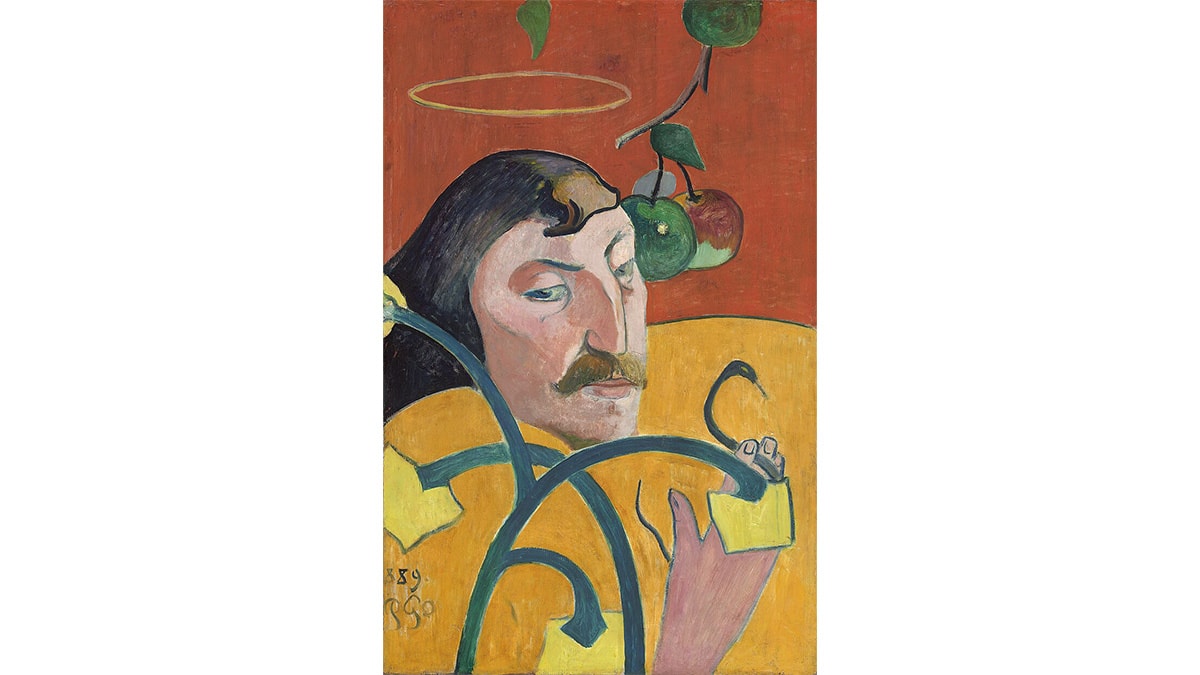
The completion of work brings happiness or breaks you apart. This self-portrait falls into the latter category.
While staying at Marie Henry’s inn, Paul Gauguin composed this self-portrait, which he wanted to hang in Marie Henry’s dining room.
The idea was to innovate her inn, for which he and his friend, who also had a stay at her inn, produced two pieces of art, one of which was a self-portrait with Halo and Snake, and the other was a Portrait of Jacob Meyer de Haan.
Speaking of Paul’s self-portrait, the art comprises two different backgrounds.
The upper side shows Gaugin’s face with a halo over his head, and next to it are two apples lying on the bough of an unknown tree in a red background.
The lower side shows the snake enveloping him, although it doesn’t demonstrate his body, with his gaze on the snake in an ochre background.
Of over 40 self portrayals, Gaugin’s 1889 self-portrait, made in oil on wood, was considered the most successful.
This stunning piece of self-art can be found in the National Gallery of Art in Washington, D.C.
Self-Portrait with Bandaged Ear (1889) by Vincent van Gogh
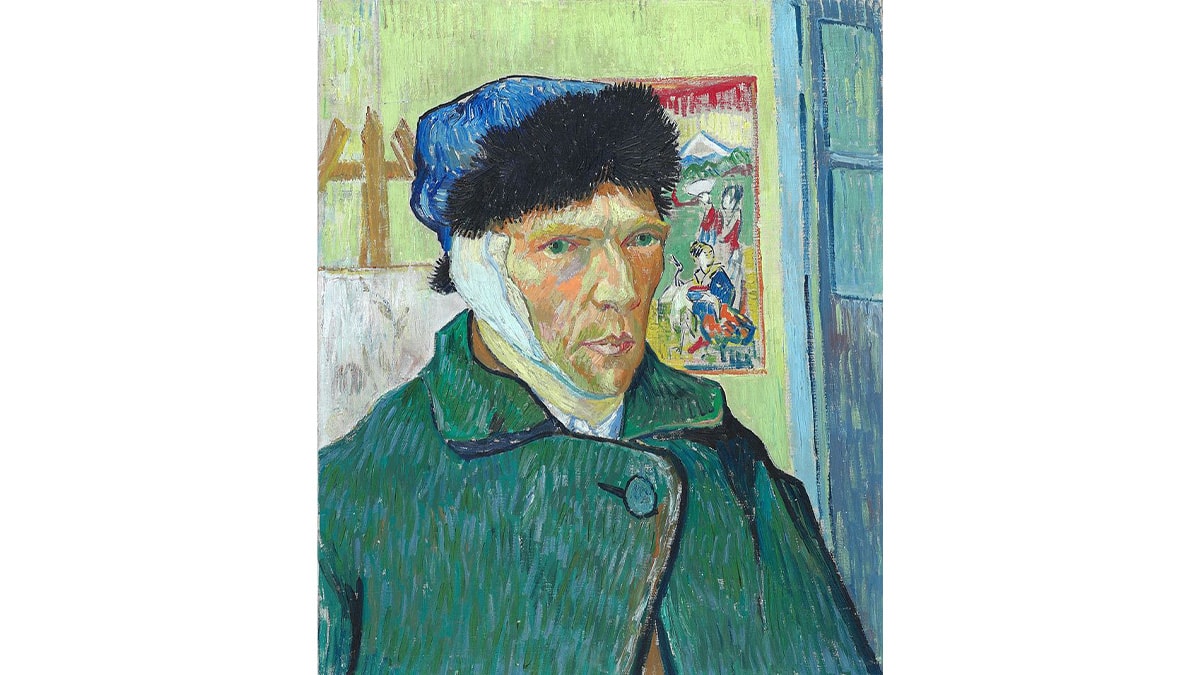
This self-portrait is a testament to Vincent’s admiration for art.
He painted himself on this self-portrait weeks after discharging from the hospital.
Vincent mutilated himself, cutting off a large chunk of his right ear.
Due to this, he was hospitalized.
There could be many reasons; the one that drew him to take this drastic step was when his friend didn’t show up to his plan, leaving a feeling of betrayal.
And second, things began to change, in a negative sense, as he was moving far from what he wanted to build.
The unique self-portrait of 1889 shows scenes from weeks after he came out of the asylum, where he was diagnosed with several mental ailments.
Self-Portrait with a Bandaged Ear demonstrated Vincent in a vulnerable position as he looked lost and helpless, wearing a coat over a white shirt and a bandage enveloping his right ear, with a fur cap denoting his harsh working condition.
Out of all, this self-portrait provides an accurate representation of Van Gogh’s last phase.
Today, you can gaze upon this well-known self-portrait in London’s Courtauld Gallery.
(Also Read: The Two Fridas Artwork)
Self-Portrait (1878-80) by Paul Cézanne
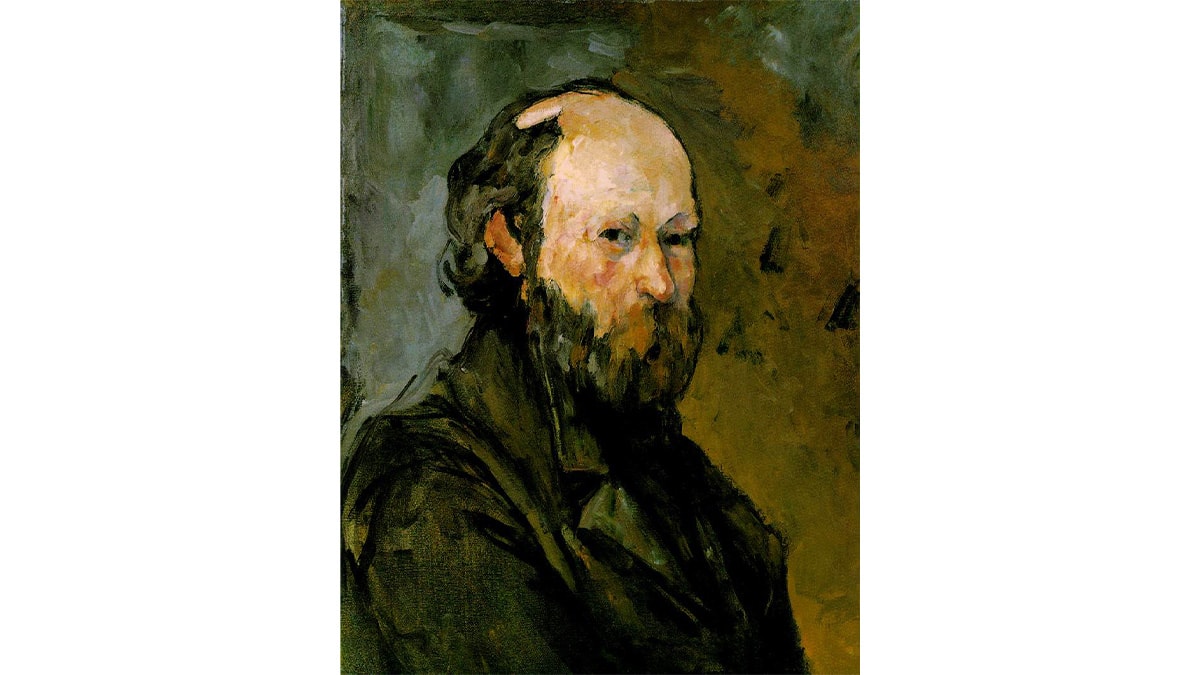
Paul Cezanne’s professional transition was evident and rewarding.
Being associated with still life and landscape art, Paul, when he began showing interest in the self-portrait genre, made it big in a short period of time.
From the 1860s to the end of his life, he painted many self-portraits, one of which was created in 1878 through 1880.
The first time he gained confidence in becoming a self-portrait artist was when he first met Paul Gaugin, Eduard Manet, and others whose works were rejected by Salon several times.
It was at the same time that he discovered new techniques, including the palette knife technique, which he later became a master at and which he used to make a portrait of his father.
This fine piece of self-portrait features the artist’s distinctive use of colors and brushstrokes and is now a permanent collection of the Phillips Collection in Washington, D.C.
Self-Portrait (1900) by Pablo Picasso
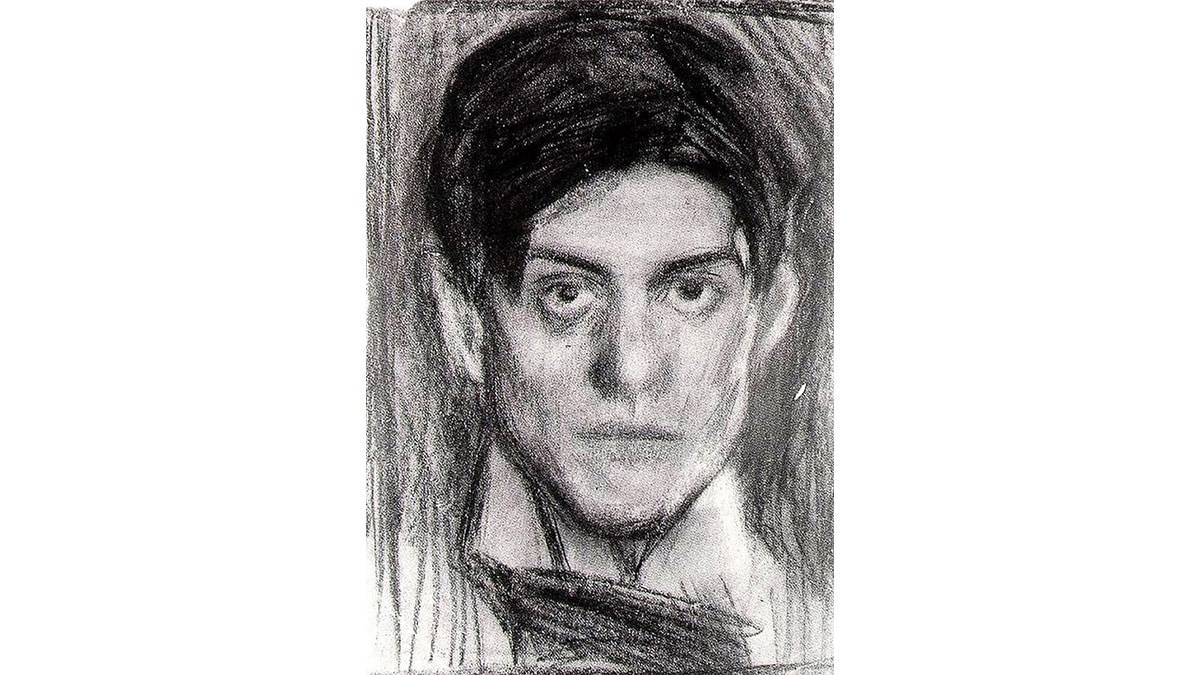
Picasso was a prolific cubist painter who also showed interest in self-portraits during his transition phase from realism to modernism.
But the way he drew this self-portrait was different from his other works.
There is a little room left for accurate images; the details that one expects from a self-portrait are missing.
The self-portrait art contains thick outlines and bold contours, paving the way for Picasso to modernism.
Did you know he was just 15 years old when he created his self-portrait (1896), which belonged to realism?
However, this belonged to modernism and probably marks his most famous abstract self-portrait.
You can witness this famous self-portrait at the Museu Picasso in Barcelona.
Self-Portrait with Cropped Hair (1940) by Frida Kahlo
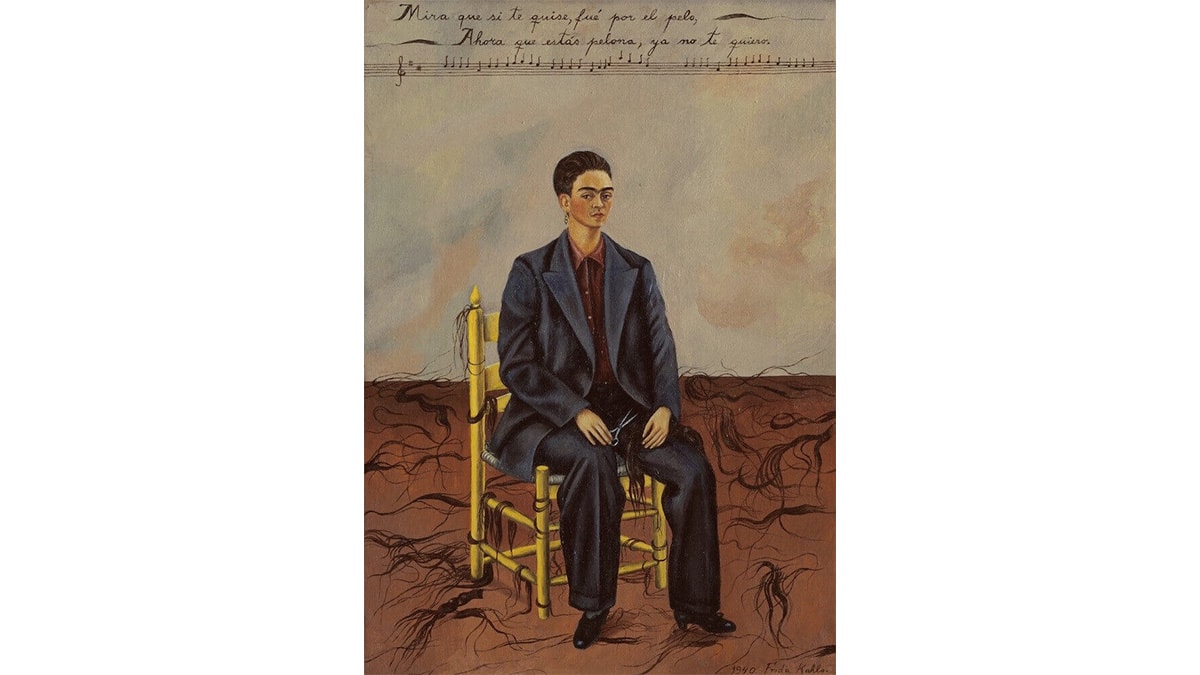
Self-portraits were Frida’s favorite kind of art.
She’d create them for several reasons, one of which was to highlight femininity.
This self-portrait is one of a kind; there’s depth, meaning, and a solid background that one could only learn if they knew the important events of Frida’s life.
The artist painted herself wearing a two-piece coat in a sitting position, absolutely lost and numb.
Her position is a bit off center, yet her gaze is in on us. This famous self-portrait leaves a very sad vibe, and it is justifiable the way she demonstrated herself.
Her tumultuous marriage with Diego, a Mexican painter, fell everything apart.
In 1939, she divorced from him, and the art that you see was created in 1940, a creation of her immense pain, loneliness, and struggles.
The lyrics of a popular Mexican song appear at the top of the composition, making it the most meaningful part of the composition.
It resonated with what was happening in Frida’s life at the time; she was divorced, financially broke, and mentally and physically exhausted.
Soft Self-Portrait with Grilled Bacon (1941) by Salvador Dali
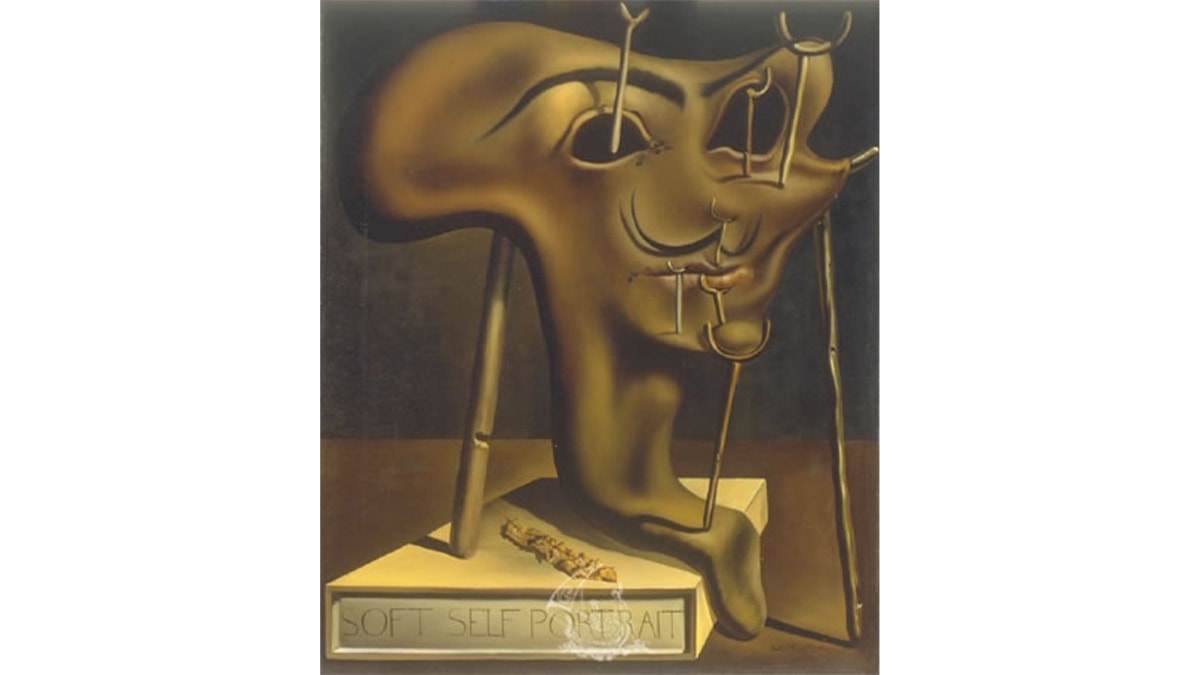
Dali’s self-portrait is surreal in nature, thanks to his contribution and immense love for the surrealism art movement.
Unlike other famous self-portraits, Dali’s art didn’t focus on accurate images or details. It focused on artistic areas people at that point were fond of.
Quite unconventional yet easy to learn who created this art.
Because the face is adorned with crutches, and as the name suggests, the face looked like overcooked bacon, needing support from crutches.
But as we all know, Dali’s known for his extraordinary surreal work and upturned mustache, which you could spot on this self-portrait.
Although he made the self-portrait look ambiguous, it still could captivate viewers because of the way he showed his face using a slice of fried bacon with a support of crutches.
The self-portrait left many people in question when it first came to the public eye. And you can have a look at the most surrealist self-portrait at Catalonia’s Dali Theatre Museum.
Final Note
Framing one’s emotions is what self-portraits are known for. Which is what some prominent painters did in the past.
From Picasso to Frida to Leonardo da Vinci to Van Gogh, every artist tried their hands on self-portraits to escape from negativity that sucked out their energy.
They used self-portraits either to heal themselves or to express their joy.
Considering the facts, the Renaissance was the official period when the self-portrait genre began to find its relevancy, with Leonardo da Vinci being a prominent figure in it.
In a few decades, the genre became so popular that artists from impressionism, cubism, and surrealism even came forward and produced their own portraits with the knowledge, resources, and skillsets they had.
When you look at art history, you’ll see countless self-portraits being made, but the ones that held significant spots possessed a dark, mysterious, gut-wrenching story.
We featured those famous self-portraits that stunned the world the very next moment when they appeared in the public domain.
In a nutshell, we talked about those famous self-portraits that had something new, dark, and unforgettable to say and were solely responsible for covering the most important moment of an artist’s life.
Frequently Asked Questions
Vincent Van Gogh, a Dutch painter, is known for his self portrait work.
Frida Kahlo created a total of 55 pieces of self portrait during his lifetime.
Self-Portrait with Halo and Snake (1889) by Paul Gauguin is the best self portrait with an abstract theme.
Self-portrait with Bandaged Ear is the most famous Van Gogh’s self portrait.
Portrait of a Man in a Red Turban is the oldest self portrait of all time.

